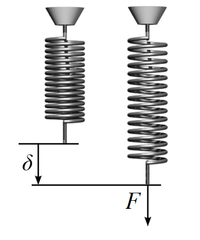
Photo from wikipedia
Accumulating evidence indicates that the physicochemical properties of biomaterials exert profound influences on stem cell fate decisions. However, matrix-based regulation selected through in vitro analyses based on a given cell… Click to show full abstract
Accumulating evidence indicates that the physicochemical properties of biomaterials exert profound influences on stem cell fate decisions. However, matrix-based regulation selected through in vitro analyses based on a given cell population do not genuinely reflect the in vivo conditions, in which multiple cell types are involved and interact dynamically. This study constitutes the first investigation of how macrophages (Mφs) in stiffness-tunable transglutaminase cross-linked gelatin (TG-gel) affect the osteogenesis of bone marrow-derived mesenchymal stem cells (BMMSCs). When a single cell type was cultured, low-stiffness TG-gels promoted BMMSC proliferation, whereas high-stiffness TG-gels supported cell osteogenic differentiation. However, Mφs in high-stiffness TG-gels were more likely to polarize toward the pro-inflammatory M1 phenotype. Using either conditioned medium (CM)-based incubation or Transwell-based co-culture, we found that Mφs encapsulated in the low-stiffness matrix exerted a positive effect on the osteogenesis of co-cultured BMMSCs. Conversely, Mφs in high-stiffness TG-gels negatively affected cell osteogenic differentiation. When both cell types were cultured in the same TG-gel type and placed into the Transwell system, the stiffness-related influences of Mφs on BMMSCs were significantly altered; both the low- and high-stiffness matrix induced similar levels of BMMSC osteogenesis. Although the best material parameter for synergistically affecting Mφs and BMMSCs remains unknown, our data suggest that Mφ involvement in the co-culture system alters previously identified material-related influences on BMMSCs, such as matrix stiffness-related effects, which were identified based on a culture system involving a single cell type. Such Mφ-stem cell interactions should be considered when establishing proper matrix parameter-associated cell regulation in the development of biomimetic biomaterials for regenerative applications. STATEMENT OF SIGNIFICANCE The substrate stiffness of a scaffold plays critical roles in modulating both reparative cells, such as mesenchymal stem cells (MSCs), and immune cells, such as macrophages (Mφs). Although the influences of material stiffness on either Mφs or MSCs, have been extensively described, how the two cell types respond to matrix cues to dynamically affect each other in a three-dimensional (3D) biosystem remains largely unknown. Here, we report our findings that, in a platform wherein Mφs and bone marrow-derived MSCs coexist, matrix stiffness can influence stem cell fate through both direct matrix-associated regulation and indirect Mφ-based modulation. Our data support future studies of the MSC-Mφ-matrix interplay in the 3D context to optimize matrix parameters for the development of the next biomaterial.
Journal Title: Acta biomaterialia
Year Published: 2018
Link to full text (if available)
Share on Social Media: Sign Up to like & get
recommendations!